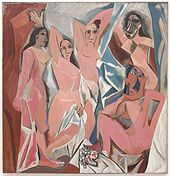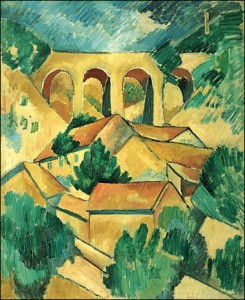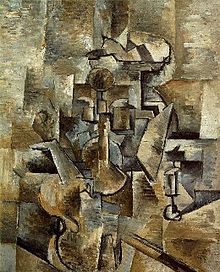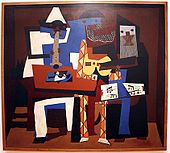The things that Picasso and I said to one another during those years will never be said again, and even if they were, no one would understand them anymore. It was like being roped together on a mountain~Georges Braque.
The origins of Cubism has been an ongoing debate for over a hundred years between art historians. My personal opinion…both men, Pablo Picasso and Georges Braque started it, one of the most famous avant-garde movements of the twentieth century. In the beginning, historians credited it to Picasso. Later, the honors were shared between Picasso and Braque…and even later, the historians favored Braque. Picasso’s claim to title rests in the change of viewpoint he used in his painting, Les Demoiselles d’Avignon (1907).

In the same year, however, Braque was engaged in a serious study of the work of Paul Cezanne which ended with his L’Estaque landscapes in 1908. He was fascinated by Cezanne’s method of depicting three dimensions by different viewpoints and how he constructed different forms out of different planes that seemed to slide and pass through each other.

Henri Matisse dismissed the painting when it was submitted to the selection jury of the 1908 Salon d’Automme. He said it was nothing but petits cubes (small cubes). Because of this, Cubism soon became the name for the movement.
So, was it Picasso or Braque that started the movement?
Not so fast. If it weren’t for the collaborative efforts of the two, the movement probably would never have been a movement. That’s right, as artists that respect each other tend to do, they got together.
By 1909 Braque and Picasso were close friends. They worked together on Cubism until 1914 when Braque went to war. The development of Cubism became a joint venture. It was hard to tell the difference in their works during this period. They often opted for subdued monochromatic palettes and painted still lifes as a subject. Space in these compositions often moved backwards, tilt and confound traditional representation of depth.


